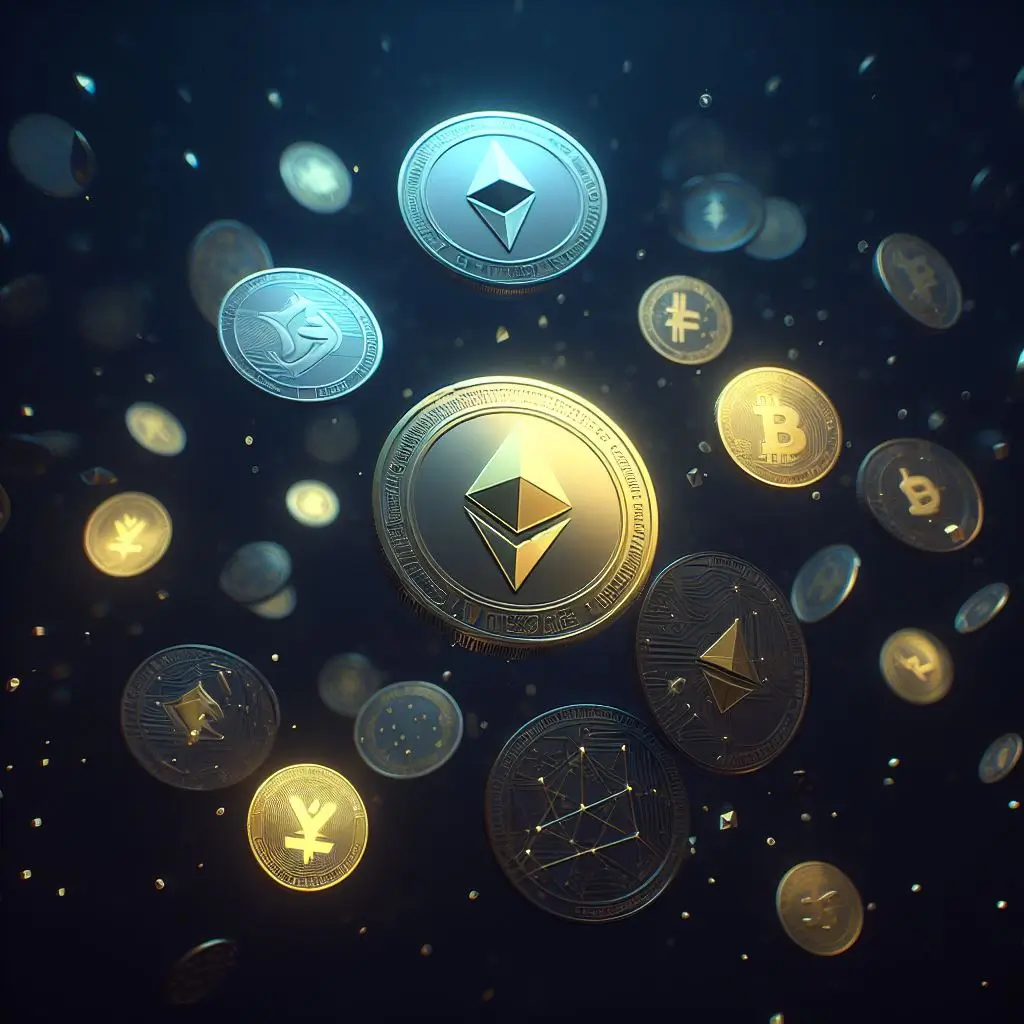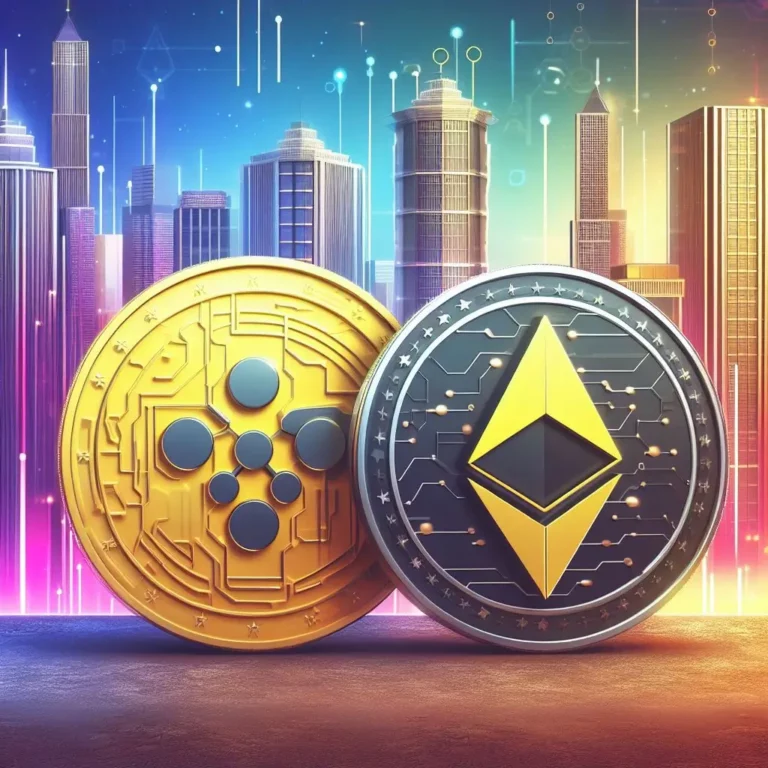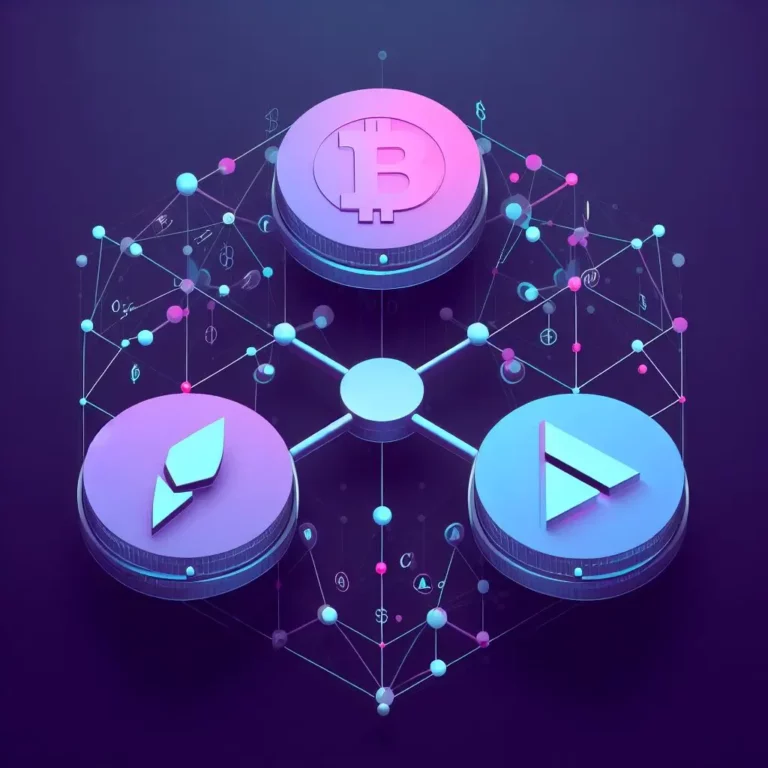Cryptocurrencies have taken the financial world by storm, and Bitcoin is often the first name that comes to mind. However, beyond Bitcoin lies a vast and diverse realm of digital currencies known as “altcoins.”
At its core, an altcoin is any cryptocurrency that is not Bitcoin. The term “altcoin” is a portmanteau of “alternative” and “coin,” signifying its role as an alternative to the pioneering cryptocurrency, Bitcoin. Altcoins share many similarities with Bitcoin, such as being built on blockchain technology, but they come in various forms and serve different purposes.
What are Altcoins?
Let’s dive deeper into what altcoins really are and why they matter in the realm of cryptocurrency.
Definition and Context
An altcoin, or “alternative coin,” is any cryptocurrency other than Bitcoin. Bitcoin, created by an individual or group under the pseudonym Satoshi Nakamoto in 2009, was the pioneering cryptocurrency. Since then, thousands of altcoins have emerged, each with its unique features and functions.
Altcoins are essentially digital currencies that use cryptography for secure transactions and operate on a decentralized ledger called a blockchain. This blockchain technology ensures the integrity and transparency of transactions, making it a breakthrough in the world of finance.
Distinguishing Altcoins from Bitcoin
While altcoins share some fundamental characteristics with Bitcoin, they differentiate themselves in various ways. These distinctions may include the underlying technology, transaction speed, governance models, and use cases. Understanding these differences is essential for making informed investment decisions.
Altcoins in the Cryptocurrency Ecosystem
The cryptocurrency ecosystem is a dynamic and ever-evolving landscape. Altcoins play a crucial role in this ecosystem by introducing innovation, competition, and diversity. They have led to the development of various applications, platforms, and services beyond what Bitcoin offers. For example, Ethereum, one of the most well-known altcoins, introduced the concept of smart contracts, allowing for automated and self-executing agreements.
Role in Diversifying Investment Portfolios
Investors often turn to altcoins to diversify their portfolios. While Bitcoin is the largest and most prominent cryptocurrency, spreading investments across different altcoins can help mitigate risk. Altcoins may exhibit different price trends and market behaviors, offering the potential for higher returns and balancing your overall investment strategy.
In the next part of our guide, we will explore the different categories of altcoins, each with its unique characteristics and use cases. This understanding will empower you to make informed choices when considering altcoin investments.
Why are Altcoins Created?
Altcoins are created for a multitude of reasons. While Bitcoin opened the doors to digital currency, altcoins aim to address its limitations, experiment with innovative features, and cater to niche use cases. Developers and crypto enthusiasts worldwide saw the potential in blockchain technology and decided to create their unique cryptocurrencies, often with distinct features and functions.
Benefits of Investing in Altcoins
Investing in altcoins presents several benefits, particularly for those who missed out on the early days of Bitcoin. These benefits include the potential for substantial returns on investment, diversification of your portfolio, and the opportunity to support projects you believe in. Altcoins can be the gateway to exploring the vast landscape of cryptocurrencies.
Risks of Investing in Altcoins
While the potential for profit is enticing, it’s crucial to acknowledge the risks. Altcoins are known for their price volatility, which can lead to significant gains but also substantial losses. Additionally, the cryptocurrency market is less regulated than traditional financial markets, making it susceptible to fraud and scams. Understanding and managing these risks is essential for any investor.
Importance of Understanding Altcoins for Beginners
For newcomers to the cryptocurrency space, grasping the concept of altcoins is vital. It allows you to make informed investment decisions, diversify your holdings, and participate in the evolving world of digital finance. This guide will provide you with the knowledge needed to navigate the world of altcoins with confidence.
In the next part of this guide, we will delve deeper into the various types of altcoins and explore how they differ from one another.
Types of Altcoins
In this section of our guide, we’ll delve into the fascinating world of altcoins and explore the different categories they fall into. Understanding these categories and their significance is crucial for anyone considering an investment in altcoins.
Platform Altcoins
Platform altcoins are a cornerstone of the cryptocurrency world. They are designed to support specific applications or platforms, going beyond the basic functionality of digital currencies. Ethereum, for instance, is a prominent platform altcoin that introduced the concept of smart contracts.
Ethereum is a decentralized platform that allows developers to create and deploy smart contracts, which are self-executing agreements with predefined rules. These contracts enable a wide range of applications, from decentralized finance (DeFi) to non-fungible tokens (NFTs).
Solana is another platform altcoin known for its high-speed transactions and scalability, making it ideal for applications like decentralized exchanges and gaming platforms.
Platform altcoins offer a wide array of use cases, from creating decentralized applications to enabling new types of financial products. They are significant because they expand the capabilities of blockchain technology beyond simple transactions.
Payment Altcoins
Payment altcoins are designed to function as a means of payment, much like traditional currencies. They are often used for everyday transactions. Two notable examples in this category are Litecoin and Dogecoin.
Litecoin is often considered the silver to Bitcoin’s gold. It is designed to offer faster transaction times and lower fees, making it a practical choice for small-value transactions.
Dogecoin started as a playful meme-inspired cryptocurrency but gained popularity as a tipping currency and even for charitable donations.
Payment altcoins provide a faster and more cost-effective way to transact, which can be especially advantageous for microtransactions and day-to-day purchases.
Utility Altcoins
Utility altcoins are designed to provide specific functions or services within the blockchain ecosystem. Filecoin and Siacoin are prominent examples.
Filecoin focuses on decentralized data storage. Users can rent out their excess storage space, and Filecoin rewards them with its native cryptocurrency for contributing to the network.
Siacoin is similar and offers decentralized cloud storage services, enabling users to store files securely across a distributed network.
Utility altcoins empower users to access and benefit from particular blockchain services, such as storage, content delivery, or computing power.
Security Altcoins
Security altcoins are designed to provide enhanced privacy and anonymity features. Monero and Zcash are notable representatives of this category.
Monero is a privacy-focused altcoin that utilizes advanced cryptographic techniques to ensure transaction privacy. It is favored by users who prioritize confidentiality in their transactions.
Zcash combines the features of Bitcoin with enhanced privacy through zero-knowledge proofs, allowing users to shield their transaction details.
Security altcoins offer users an additional layer of privacy and security, making them attractive for individuals seeking to keep their financial activities confidential.
Evolution and Trends in Altcoin Categories
The world of altcoins is dynamic, with new categories and trends emerging regularly. Stay tuned for the latest developments in altcoin technology and explore which categories align with your investment goals.
How to Invest in Altcoins
In this section of our guide, we’ll explore the practical steps involved in investing in altcoins. It’s crucial to approach altcoin investments with careful consideration and a well-thought-out strategy.
Choose a Reputable Cryptocurrency Exchange
Selecting the right cryptocurrency exchange is a crucial first step in your altcoin investment journey. Reputable exchanges offer security, a variety of altcoins, and user-friendly interfaces. When choosing an exchange, consider factors like user reviews, security features, and the range of available altcoins.
1. Factors to Consider
- Prioritize exchanges with strong security measures, such as two-factor authentication (2FA) and cold storage for digital assets.
- Ensure the exchange supports the altcoins you want to invest in.
- Look for exchanges with intuitive interfaces, especially if you’re new to crypto.
Create an Account and Deposit Funds
Registration: Sign up for an account on the chosen exchange by providing your basic information.
Verification: Complete the required identity verification, which can involve providing personal documents in compliance with Know Your Customer (KYC) regulations.
Deposit Funds: Deposit fiat currency or other cryptocurrencies into your exchange account.
Security Measures To keep your investments safe, enable security features like 2FA, and be cautious when sharing personal information. Ensure the exchange’s security protocols are robust.
Select the Altcoin(s) to Invest In
- Research and Analysis Before investing in any altcoin, conduct thorough research. Understand the technology behind the altcoin, its use cases, and the team responsible for its development. Analyze its historical performance and potential for growth. Reputable sources of information include official websites, whitepapers, and credible news outlets.
- Consideration of Investment Goals Define your investment goals. Are you looking for short-term gains, long-term holdings, or diversification? Your goals will influence the altcoins you choose.
Placing Buy Orders
- Market Orders vs. Limit Orders
- Market Orders: These are executed immediately at the current market price. They are suitable when you want to buy or sell quickly.
- Limit Orders: With limit orders, you specify the price at which you want to buy or sell an altcoin. This strategy allows you to have more control over the price you pay or receive.
- Risk Management Altcoin investments can be volatile. To manage risks, consider setting stop-loss orders to limit potential losses and take-profit orders to secure profits when a specific target is met.
Monitoring and Managing Investments
- Strategies for Portfolio Management A well-managed portfolio can help spread risk. Diversify your investments across different altcoins, industries, and risk levels to minimize potential losses. Regularly review and rebalance your portfolio to align with your investment goals.
- When to Make Changes Keep an eye on market trends and your investments. Consider adjusting your portfolio if there are significant market shifts or if your investment goals change.
In the next section, we’ll conclude our comprehensive guide by summarizing key points, providing tips for investing in altcoins, and suggesting resources for further learning.
Conclusion
As we wrap up our comprehensive guide on altcoins, it’s essential to recap the key points, provide valuable tips for investing in altcoins, and suggest resources for further learning. Let’s summarize what you’ve learned about this intriguing facet of the cryptocurrency world.
Summary of Key Points
Here’s a brief summary of the key takeaways:
- Altcoin Definition: Altcoins are all cryptocurrencies other than Bitcoin.
- Why Altcoins Matter: Altcoins serve various purposes, from enhancing transaction speed to providing privacy features and supporting decentralized applications.
- Types of Altcoins: Altcoins are categorized into platform altcoins, payment altcoins, utility altcoins, and security altcoins.
- Investing in Altcoins: To invest in altcoins, you need to choose a reputable exchange, create an account, deposit funds, conduct research, and use strategies like market and limit orders.
- Risk Management: Altcoin investments can be volatile, so it’s essential to manage risks through diversification and strategic buy and sell orders.
- Monitoring and Managing Investments: Regularly review your investments and be prepared to make changes as needed.
Resources for Learning More About Altcoins
If you’re eager to dive deeper into the world of altcoins, there are numerous resources available:
- Suggested Reading and Websites: Explore books, articles, and websites dedicated to cryptocurrency and altcoins. Some notable resources include “Mastering Bitcoin” by Andreas M. Antonopoulos and websites like CoinDesk and CoinTelegraph.
- Online Communities and Forums: Join online communities and forums where you can interact with experienced cryptocurrency enthusiasts and investors. Reddit’s r/CryptoCurrency and BitcoinTalk are excellent places to start. These platforms are valuable for discussing investment strategies, asking questions, and staying updated on the latest trends.
In conclusion, altcoins offer a vast array of opportunities for investors and innovators in the realm of cryptocurrencies. They not only expand the capabilities of blockchain technology but also provide potential for substantial returns on investment. However, it’s essential to approach altcoin investments with caution, thorough research, and a clear strategy.






